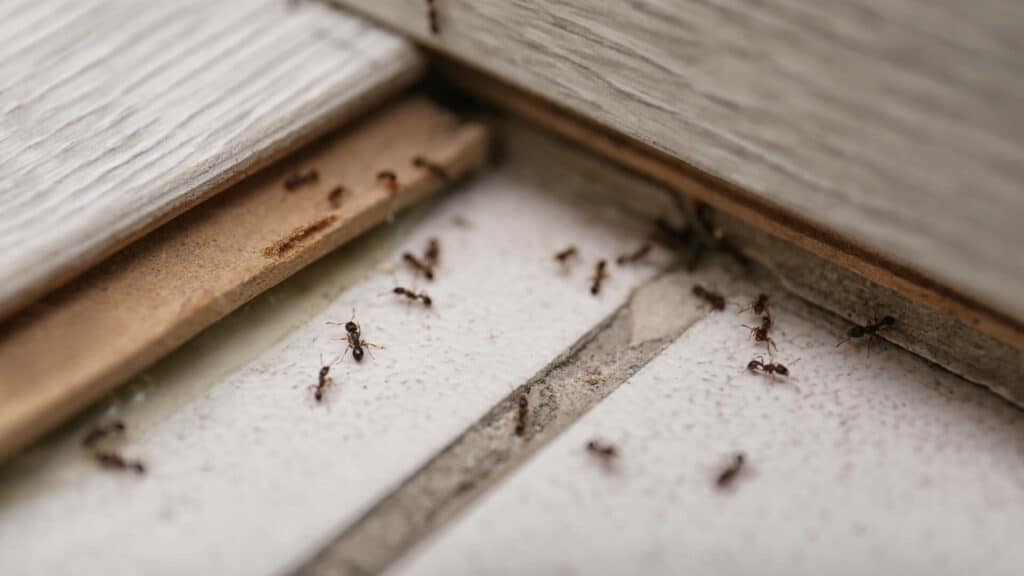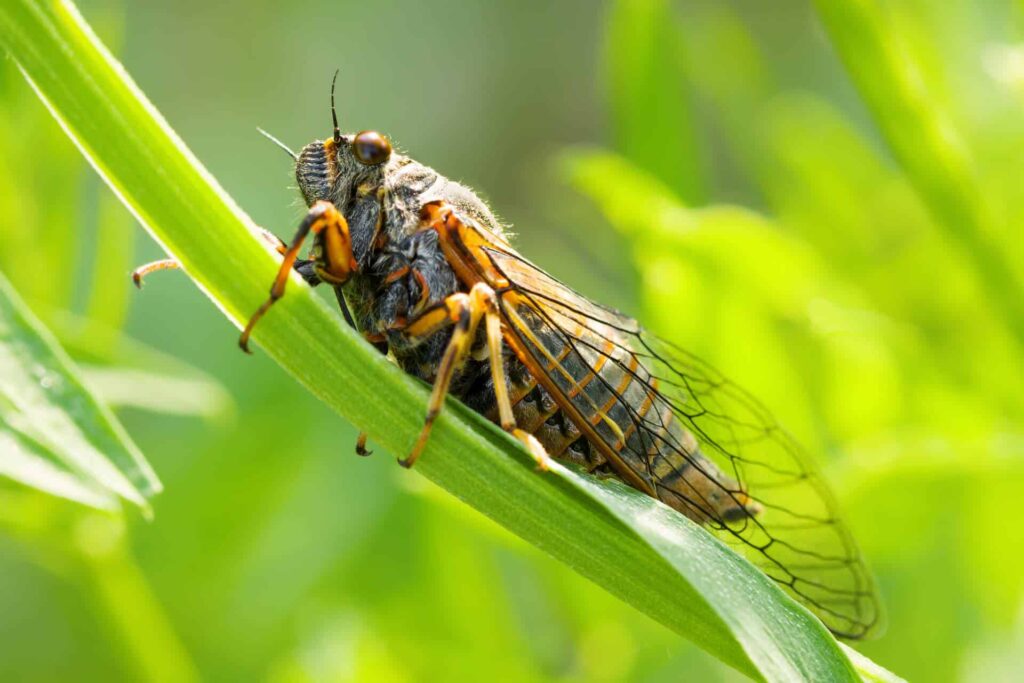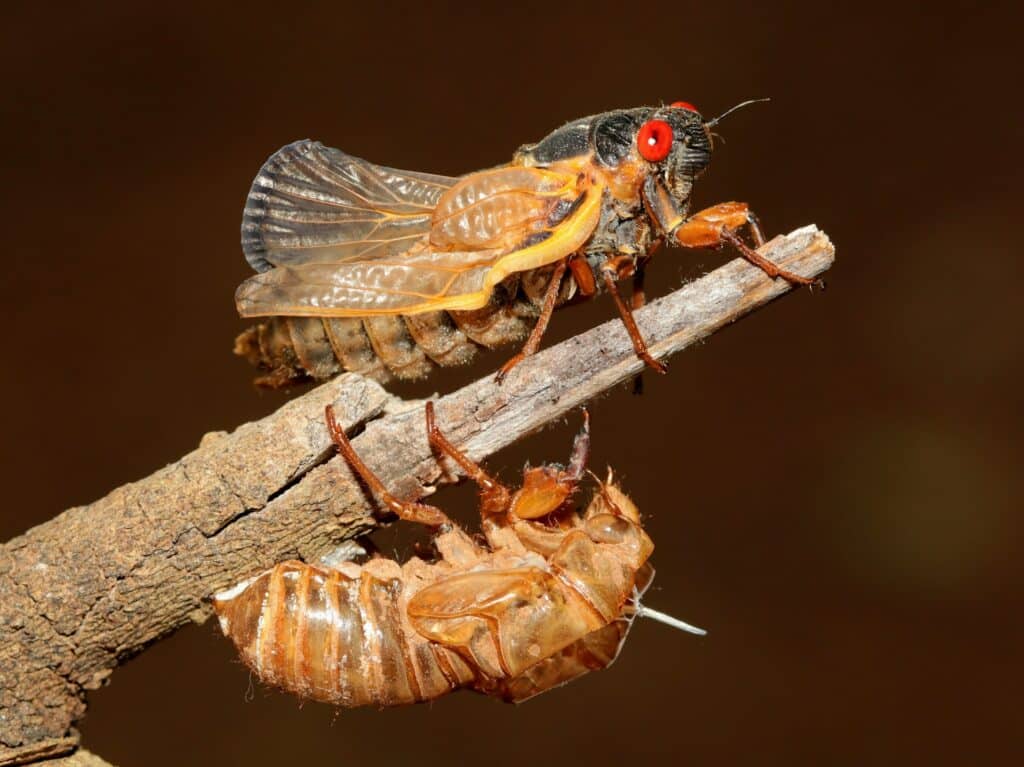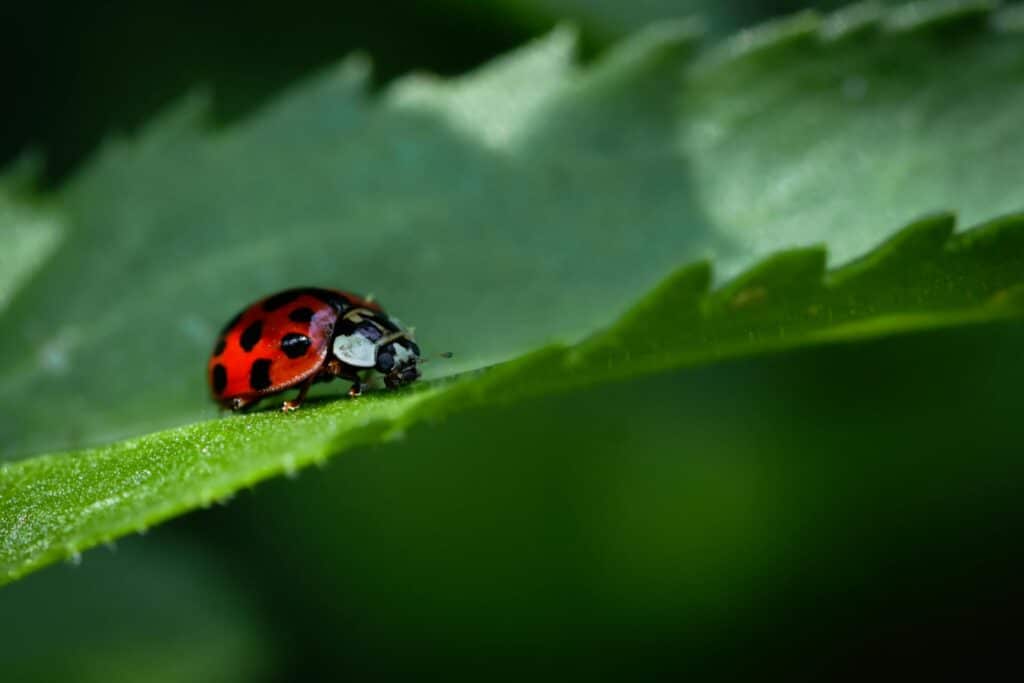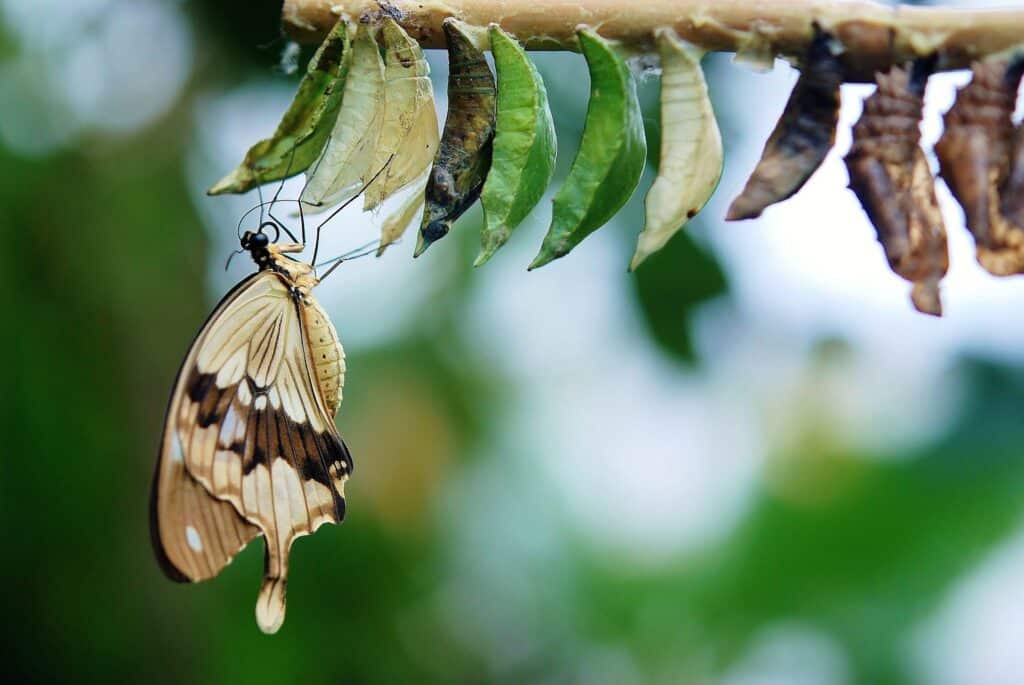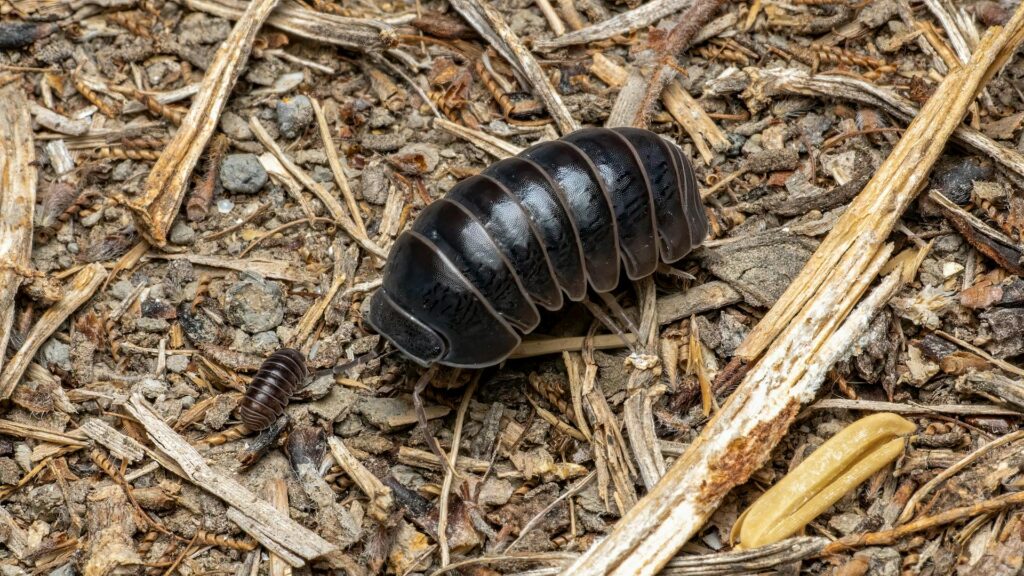If you’ve ever been kept awake by a persistent chirping sound coming from somewhere in your home, you’ve likely encountered crickets. These familiar insects are known for their distinctive nighttime serenades, which can be either charming background noise when experienced outdoors or an irritating disturbance when they make their way into your living spaces. While generally harmless, crickets can become household pests when they enter in large numbers, potentially causing damage to fabrics, paper products, and certain foods.
What are crickets?
Crickets are insects belonging to the order Orthoptera, closely related to grasshoppers and katydids. There are over 900 species worldwide, with house crickets, field crickets, and camel crickets being the types most commonly encountered in North American homes. These primarily nocturnal insects are known for the males’ distinctive chirping, produced by rubbing their wings together—a process called stridulation—to attract females.
Crickets serve important ecological roles as both decomposers feeding on decaying plant material and as a food source for various wildlife. While primarily outdoor insects, they often enter homes seeking warmth, shelter, and food, particularly in late summer and fall as temperatures cool. Most cricket species are omnivorous, consuming plant materials, other insects, and even fabrics or paper products when necessary. In some cultures, crickets are considered symbols of good luck, while in others, they’re raised as food for humans or pets.
What do crickets look like?
Crickets have a distinctive appearance that makes them relatively easy to identify. They typically measure between ½ to 1 inch in length, with field and house crickets being on the larger end of this spectrum. Their bodies are somewhat cylindrical and slightly flattened, usually colored in shades of brown, black, or tan, sometimes with patterns of lighter markings.
One of their most notable features is their powerful hind legs, which are significantly larger and more muscular than their other legs, allowing them to jump impressive distances relative to their size. Most cricket species have two pairs of wings—the front pair being tough and leathery to protect the more delicate hindwings used for flight, though many common species rarely fly.
They have long, slender antennae that often exceed their body length, used to sense their environment. Female crickets are identifiable by their long, needle-like ovipositors extending from the rear of their abdomen, used for depositing eggs into soil or plant material.
Lifecycle of a cricket
The cricket lifecycle follows a three-stage pattern of incomplete metamorphosis: egg, nymph, and adult. The process begins when female crickets use their long ovipositors to deposit eggs in moist soil, plant material, or crevices. A single female can lay between 100 and 400 eggs during her lifetime, with optimal egg-laying occurring at temperatures between 80-90°F.
These eggs typically hatch in about two weeks, though this varies with temperature and species. The emerging nymphs resemble miniature, wingless versions of adult crickets. They undergo a series of molts—typically 8 to 10—over a period of 6-12 weeks, shedding their exoskeletons to grow larger with each molt. Wing pads become visible in later nymphal stages, developing into functional wings at the final molt when they reach adulthood.
Adult crickets typically live for 8-10 weeks after reaching maturity, focusing on feeding and reproduction. Most cricket species produce one generation annually in temperate climates, with eggs overwintering and hatching in spring, though some species like house crickets can breed continuously in warm, indoor environments.
Are crickets dangerous?
Crickets pose minimal danger to humans and are generally considered nuisance pests rather than health threats. They don’t bite, sting, or transmit diseases, and most species attempt to flee rather than act aggressively when encountered. The primary issue with crickets is property damage rather than safety concerns.
In large numbers, they can damage fabrics—particularly those containing natural fibers like wool, silk, or cotton—as well as paper products, houseplants, and occasionally stored foods. House crickets may chew on clothing, curtains, or furniture upholstery, especially if these items contain food stains or body oils. Their excrement can stain fabrics and surfaces, while their nocturnal chirping can cause sleep disturbances when they establish themselves inside homes.
Occasionally, cricket infestations may indirectly attract other pests like spiders or centipedes that prey on them. For individuals with specific sensitivities, cricket shed skins and droppings might trigger allergic reactions, but this is relatively uncommon. Overall, while crickets can be annoying and potentially destructive to certain materials, they aren’t considered dangerous to human health or safety.
What are the differences between crickets and cicadas?
Crickets and cicadas, while both known for their sounds, differ significantly in numerous ways:
- Physical size and appearance: Crickets are much smaller, typically measuring ½ to 1 inch long with slender bodies, while cicadas are substantially larger (1-2 inches) with broader, more robust bodies.
- Sound production mechanisms: Cricket males create chirps by rubbing their wings together (stridulation), while male cicadas use specialized organs called tymbals on their abdomens to generate their distinctive buzzing chorus.
- Lifecycle duration: Crickets undergo incomplete metamorphosis with a lifespan of a few months, while cicadas develop underground for 2-17 years depending on the species.
- Activity patterns: Crickets are primarily nocturnal, producing sounds mostly at night, whereas cicadas are diurnal, singing primarily during daylight hours.
- Habitat preferences: Crickets commonly enter homes and structures, while cicadas rarely invade indoor spaces.
- Emergence patterns: Crickets appear annually and can breed continuously in suitable conditions, whereas cicadas emerge either annually in small numbers or periodically in massive synchronized broods.
- Environmental impact: Cricket activity is consistent throughout warm months, while cicada emergences create temporary but intense periods of high activity and noise.
- Structural interaction: Crickets often become indoor pests requiring exclusion methods, while cicadas remain primarily outdoor insects that don’t typically require home pest control measures.
What are the differences between crickets and grasshoppers?
Crickets and grasshoppers, both belonging to the order Orthoptera, share many similarities but can be distinguished through several key differences:
- Antenna length: Crickets typically have long antennae that often exceed their body length, while grasshoppers feature much shorter antennae, usually shorter than their bodies.
- Sound production methods: Crickets create chirping sounds by rubbing their forewings together, while grasshoppers produce sounds by rubbing their hind legs against their wings or body.
- Activity timing: Crickets are predominantly nocturnal, becoming active and vocal primarily at night, whereas grasshoppers are diurnal insects active during daylight hours.
- Habitat preferences: Crickets favor dark, moist environments and often enter structures, while grasshoppers typically remain in open, sunny fields and rarely invade homes.
- Coloration patterns: Crickets are usually uniformly colored in browns and blacks, while grasshoppers often display more varied and brighter coloration.
- Dietary differences: Crickets are more omnivorous, sometimes consuming animal protein and fabric materials, unlike the strictly plant-eating grasshoppers.
- Structural invasion: Crickets commonly become indoor pests requiring home exclusion measures, while grasshoppers remain primarily outdoor insects.
- Environmental adaptation: Crickets are adapted for sheltered, humid conditions, while grasshoppers thrive in open, exposed grassland environments.
How do crickets get in your home?
Crickets enter homes through various access points, often seeking shelter, warmth, moisture, or food sources. The most common entry pathways include gaps under exterior doors where weatherstripping is missing or damaged, providing easy access for these ground-dwelling insects. Cracks in foundations, particularly at ground level, serve as highways into homes, as do openings around utility penetrations like pipes, cables, and vents. Open windows and doors, especially at night when outdoor lights attract crickets to the vicinity, create obvious entry opportunities.
They may hitchhike inside on items brought in from garages, storage sheds, or garden areas, including firewood, plants, or outdoor equipment. Basement windows and bulkhead doors, often less well-sealed than other areas, provide additional access points. Once inside, crickets typically seek out dark, warm, humid environments like basements, crawl spaces, laundry areas, and bathrooms.
During late summer and fall, cricket entries increase significantly as outdoor temperatures drop and these insects actively seek warmer environments to extend their breeding season, making preventative measures particularly important during these seasonal transitions.
Do crickets hibernate?
Crickets don’t undergo true hibernation like some mammals, but they do have overwintering strategies that vary by species and life stage. In temperate climates, most adult field and house crickets die off with the arrival of cold weather, unable to survive freezing temperatures. These species typically overwinter as eggs laid in soil or protected areas during fall, with the eggs remaining dormant until spring temperatures rise sufficiently for development to resume.
The eggs contain natural antifreeze compounds that prevent them from being damaged by freezing conditions. Some cricket species, particularly camel crickets (cave crickets), can survive winter as nymphs or adults by seeking protected microhabitats like deep leaf litter, animal burrows, or human structures where temperatures remain above freezing.
In heated buildings, house crickets may continue their normal activities year-round without any dormancy period, which explains why infestations can persist through winter months in homes and other structures. This lack of true hibernation means that cricket control may be necessary year-round in indoor environments, though outdoor populations naturally decline during colder months.
How to know if you have a cricket infestation
Identifying a cricket infestation involves recognizing several distinctive signs:
- Characteristic chirping sounds: You might hear distinctive chirping, particularly in evening and nighttime hours, produced only by male crickets to attract mates, often seeming to change volume or location when you attempt to locate the source.
- Temperature-related activity: It’s common to notice sounds typically intensifying as indoor temperatures rise, becoming more noticeable in warm, humid conditions.
- Visual sightings: You might spot the insects themselves in dark, warm areas like basements, utility rooms, behind appliances, or near heat sources.
- Species identification: You’ll likely observe house crickets that are typically light yellowish-brown, while field crickets are darker brown to black, both measuring about 3/4 to 1 inch long with long antennae.
- Physical evidence: You’ll find small, cylindrical droppings resembling tiny dark pellets near harborage areas, and shed skins (molts) in corners or along baseboards.
- Material damage: It’s common to discover damage to fabrics or paper products, with crickets feeding on materials containing starch or organic fibers, leaving irregular holes or chewed edges
- Targeted feeding signs: You’ll often notice damage particularly on items like wallpaper, clothing, drapes, or upholstery, especially if these materials contain food stains or body oils.
- Predator attraction: You might observe an increase in predatory insects like spiders or centipedes, which are attracted to areas with available cricket prey.
- Distinctive odors: You’ll also likely detect a musty smell from cricket waste and secretions, particularly in enclosed spaces with limited ventilation during severe infestations.
How to prevent a cricket infestation
Preventing cricket infestations requires a multi-faceted approach focused on exclusion and habitat modification:
- Seal entry points: Install door sweeps on exterior doors, repair damaged window screens, and caulk cracks in foundations and around utility penetrations.
- Reduce lighting attraction: Minimize outdoor lighting that attracts crickets, or switch to yellow “bug lights” that are less appealing to insects.
- Eliminate harborage areas: Keep grass trimmed short, eliminate tall weeds, and maintain a vegetation-free band of gravel or similar material around the foundation.
- Move outdoor attractants: Relocate woodpiles, compost bins, and dense ground cover away from the building, as these provide ideal cricket habitat.
- Control indoor humidity: Reduce moisture in basements and crawl spaces using dehumidifiers or improved ventilation, as crickets are attracted to moist environments.
- Protect susceptible items: Store clothing and paper products in sealed plastic containers rather than cardboard boxes, particularly in basement areas.
- Professional interventions: For existing infestations or persistent problems, contact professional pest control services that can identify specific cricket species and locate primary entry points.
- Commercial-grade solutions: Professional technicians can implement targeted treatments using commercial-grade products not available to consumers for cricket control.
- Comprehensive control: Professional pest control services provide more thorough cricket control while eliminating the need for homeowners to handle insecticides, often resulting in faster resolution and more effective long-term prevention.
When to call a professional
When dealing with cricket problems in your home, Aptive’s pest control experts can help. Our technicians will perform a detailed inspection to assess the situation and develop a customized treatment plan based on the specific pest species present. We’ll identify whether you’re dealing with house crickets that typically infest living spaces and basements, camel crickets that prefer dark, damp areas, or field crickets that may have entered from your yard.
For house crickets, we’ll focus on their primary harborage areas and implement targeted treatments for these noisy invaders. When addressing potential entry points, we can help by recommending sealing of gaps and cracks around your foundation, doors, and windows to prevent future crickets from getting inside. Our comprehensive approach addresses both current populations and helps prevent future infestations through exclusion and habitat modification strategies.
If you’re experiencing problems with these persistent pests, contact Aptive today for a free quote. Our experts will evaluate your specific situation and recommend the most effective solutions to protect your home from these unwelcome chirping invaders.
